Related Research Articles

The Band was a Canadian-American rock band formed in Toronto, Ontario, in 1967. It consisted of Canadians Rick Danko, Garth Hudson, Richard Manuel, Robbie Robertson, and American Levon Helm. The Band combined elements of Americana, folk, rock, jazz, country, and R&B, influencing musicians such as George Harrison, Elton John, the Grateful Dead, Eric Clapton and Wilco.
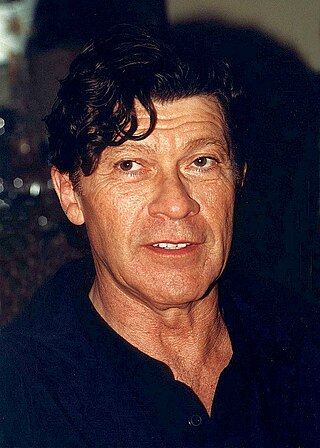
Jaime Royal "Robbie" Robertson was a Canadian musician. He was lead guitarist for Bob Dylan in the mid-late 1960s and early-mid 1970s, guitarist and songwriter with the Band from their inception until 1978, and a solo artist.
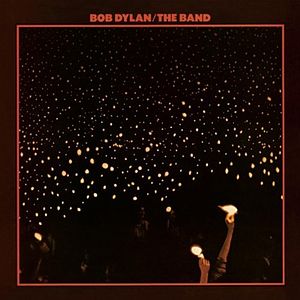
Before the Flood is a live album by American singer-songwriter Bob Dylan and The Band, released on June 20, 1974, on Asylum Records in the United States and Island Records in the United Kingdom. It was Dylan's first live album, although live recordings of earlier performances would later be released. It is the 15th album by Dylan and the seventh by the Band, and documents their joint 1974 American tour. It peaked at No. 3 on the Billboard 200, reached No. 8 on the popular album chart in the UK, and has been certified Platinum by the Recording Industry Association of America.
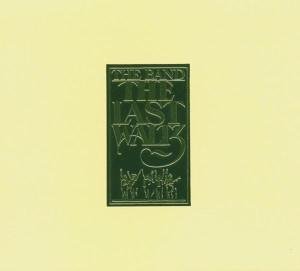
The Last Waltz is the second live album by the Band, released on Warner Bros. Records in 1978, catalogue 3WS 3146. It is the soundtrack to the 1978 film of the same name, and the final album by the original configuration of the Band. It peaked at No. 16 on the Billboard 200.

Planet Waves is the fourteenth studio album by American singer-songwriter Bob Dylan, released on January 17, 1974, by Asylum Records in the United States and Island Records in the United Kingdom.
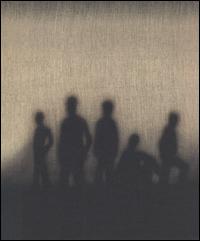
A Musical History is the second box set to anthologize Canadian-American rock group the Band. Released by Capitol Records on September 27, 2005, it features 111 tracks spread over five compact discs and one DVD. Roughly spanning the group's journey from 1961 to 1977, from their days behind Ronnie Hawkins and Bob Dylan through the departure of Robbie Robertson and the first disbanding of the group. The set includes highlights from each of the group's first seven studio albums and both major live recordings and nearly forty rare or previously unreleased performances.
"Shelter from the Storm" is a song by Bob Dylan, recorded on September 17, 1974, and released on his 15th studio album, Blood on the Tracks, in 1975. It was later anthologized on the compilation album The Essential Bob Dylan in 2000.

Hotcakes is the fourth studio album by American singer-songwriter Carly Simon, released by Elektra Records, on January 11, 1974. Featuring the major hits "Haven't Got Time for the Pain" and "Mockingbird", the latter a duet with her then-husband James Taylor, Hotcakes became one of Simon's biggest selling albums. Her first concept album, the autobiographical songs portray Simon happily married and beginning a family.

The Bob Dylan and the Band 1974 Tour – sometimes referred to as Tour '74 – was a two-month concert tour staged in arenas during early 1974 that featured Bob Dylan, in his first tour in eight years, performing with his old partners the Band. The tour generated intense fan and media interest and tickets for the shows, available only through mail order, were in great demand. Shows on the concert featured segments with Dylan and the Band together, the Band by themselves, and Dylan by himself. Accounts of the shows emphasized the sometimes drastic rearrangements that Dylan's well-known songs were presented with. A live double album, Before the Flood, was recorded during the tour and released later in the year.
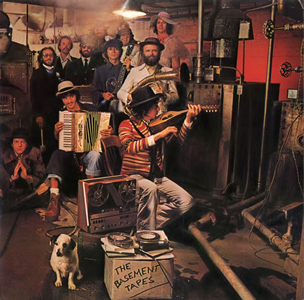
The Basement Tapes is the sixteenth album by American singer-songwriter Bob Dylan and his second with the Band. It was released on June 26, 1975, by Columbia Records. Two-thirds of the album's 24 tracks feature Dylan on lead vocals backed by the Band, and were recorded in 1967, eight years before the album's release, in the lapse between the release of Blonde on Blonde and the subsequent recording and release of John Wesley Harding, during sessions that began at Dylan's house in Woodstock, New York, then moved to the basement of Big Pink. While most of these had appeared on bootleg albums, The Basement Tapes marked their first official release. The remaining eight songs, all previously unavailable, feature the Band without Dylan and were recorded between 1967 and 1975.
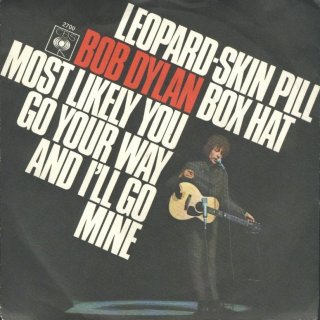
"Most Likely You Go Your Way and I'll Go Mine", or "Most Likely You Go Your Way (and I'll Go Mine)", is a song by American singer-songwriter Bob Dylan. It was released as the first track on side three of his seventh studio album Blonde on Blonde (1966). The song was written by Dylan and produced by Bob Johnston. Dylan recounted that he had probably written the song after the end of a relationship. The song's narrator criticizes the lies and weakness of a woman, and says that he finds it hard to care. The final verse establishes that the woman has been unfaithful to the narrator by having a relationship with another man, as he suspected all along.
"When I Paint My Masterpiece" is a 1971 song written by Bob Dylan. It was first released by The Band, who recorded the song for their album Cahoots, released on September 15, 1971.

Shot Through the Heart is the fifth album by American singer/songwriter Jennifer Warnes, released on Arista Records in 1979. It peaked at #13 on the Billboard Country albums chart and #94 on the main Billboard albums chart.
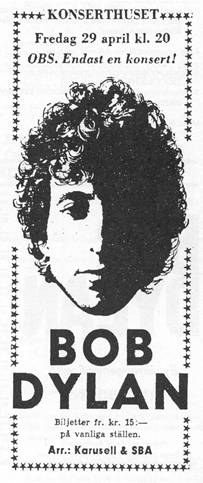
The Bob Dylan World Tour 1966 was a concert tour undertaken by American musician Bob Dylan, from February to May 1966. Dylan's 1966 World Tour was notable as the first tour where Dylan employed an electric band backing him, following him "going electric" at the 1965 Newport Folk Festival. The musicians Dylan employed as his backing band were known as the Hawks, who later became famous as the Band.
"Going, Going, Gone" is a song by Bob Dylan. It was released in 1974 on the album Planet Waves, and also appeared on the 1979 live album Bob Dylan at Budokan. The song is in the key of F major. Dylan is accompanied by The Band.

"Forever Young" is a song by Bob Dylan, recorded in California in November 1973. The song first appeared, in two different versions, a slow-pace and a fast-pace, on Dylan's fourteenth studio album Planet Waves.
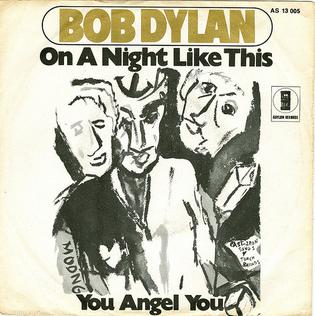
"On a Night Like This" is a song written by Bob Dylan and recorded in November 1973. It first appeared on Dylan's 14th studio album, Planet Waves, as the opening track. It was also released as the lead single from the album and reached #44 on the Billboard Hot 100 The song later appeared on several Dylan compilation albums including Biograph, in 1985, and Dylan, in 2007.

Lost on the River: The New Basement Tapes is an album produced by T Bone Burnett featuring a collective of musicians recording under the moniker The New Basement Tapes—Elvis Costello, Rhiannon Giddens, Taylor Goldsmith, Jim James and Marcus Mumford.
"When You Awake" is a song written by Robbie Robertson and Richard Manuel that was first released on The Band's 1969 self-titled album The Band. A live performance was included on the Bob Dylan and The Band live album Before the Flood.
References
- ↑ Bob Dylan. (1974). Dirge. Planet Waves [CD]. Los Angeles, CA: Asylum.
- ↑ "Songs". Bob Dylan Songs. Sony Music Entertainment. Retrieved July 29, 2011.
- ↑ "Beyond Mr Tambourine Man: 80 Bob Dylan songs everyone should know". the Guardian. May 22, 2021. Retrieved May 22, 2021.
- ↑ Heylin, Clinton (2000). Bob Dylan: Behind the Shades Revisited. New York: HarperCollins. p. 800. ISBN 978-0-06-052569-9.
- ↑ Margotin, Philippe (2015). Bob Dylan : all the songs : the story behind every track. Jean-Michel Guesdon (First ed.). New York. ISBN 978-1-57912-985-9. OCLC 869908038.
{{cite book}}: CS1 maint: location missing publisher (link)
- Bob Dylan. (1974). Dirge. Planet Waves [CD]. Los Angeles, CA: Asylum.